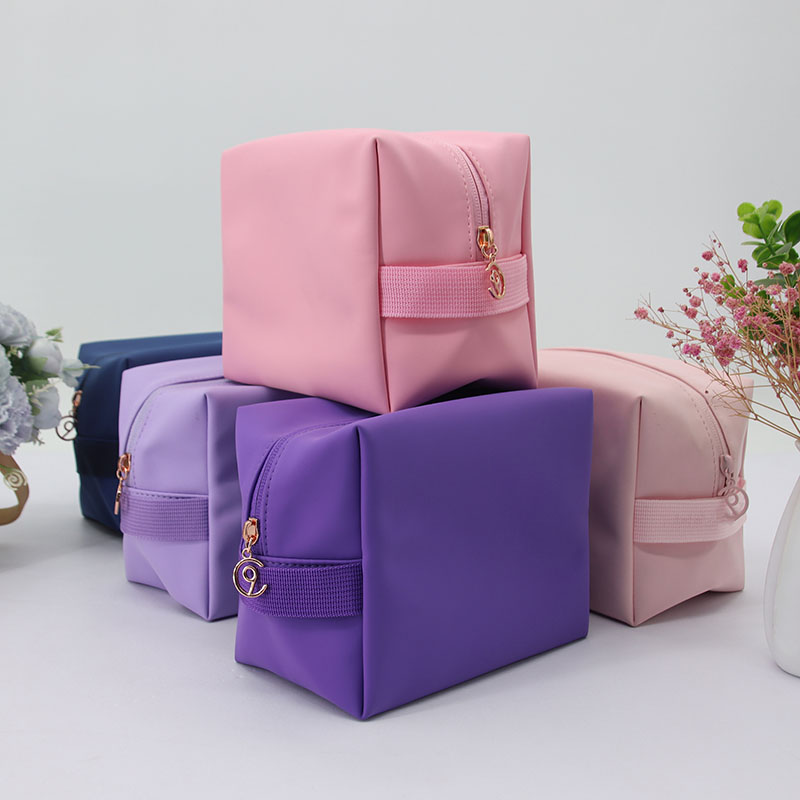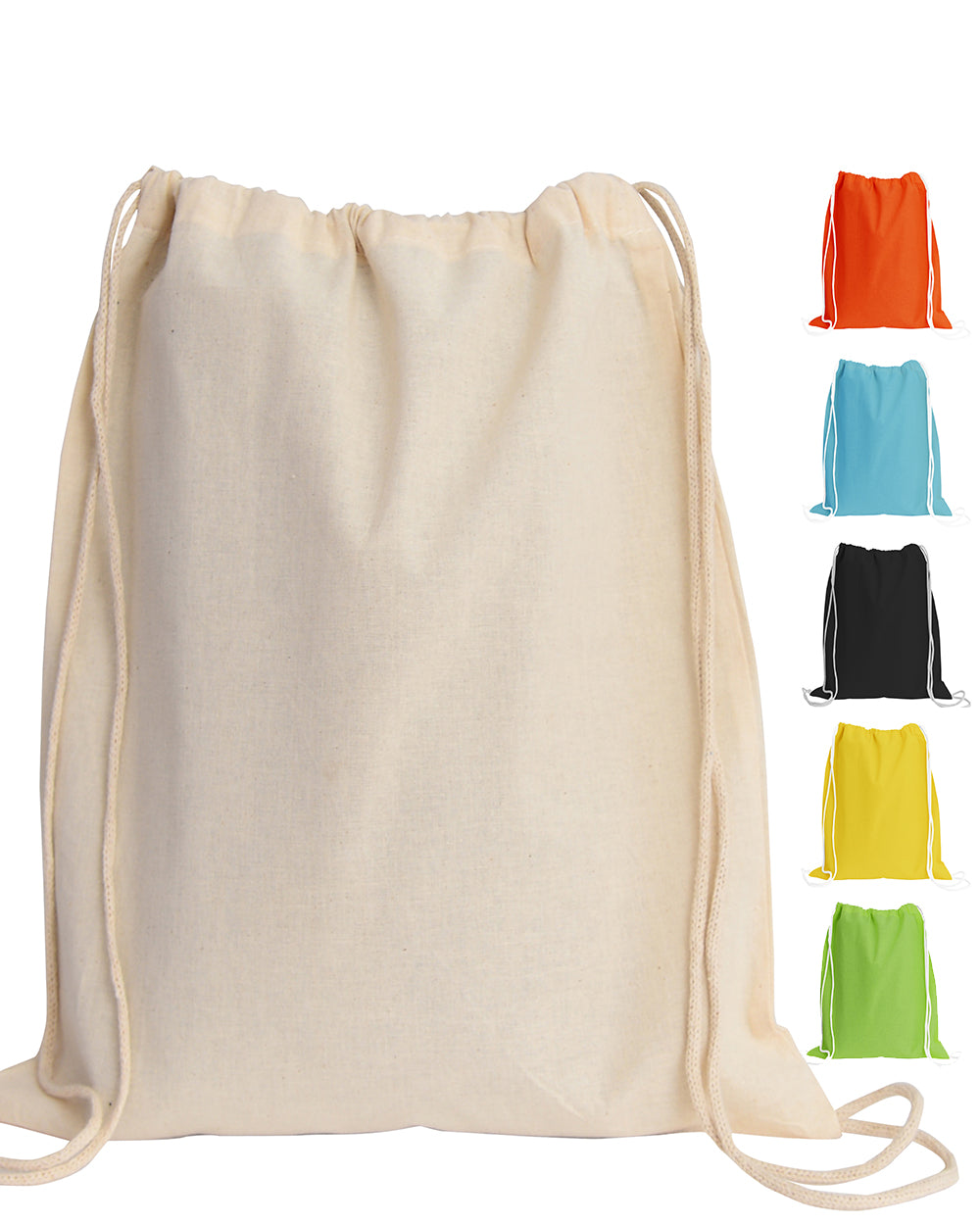Aniline leather is a premium, full-grain material colored with soluble dyes. It has no surface pigment, showcasing the hide’s natural grain and markings.
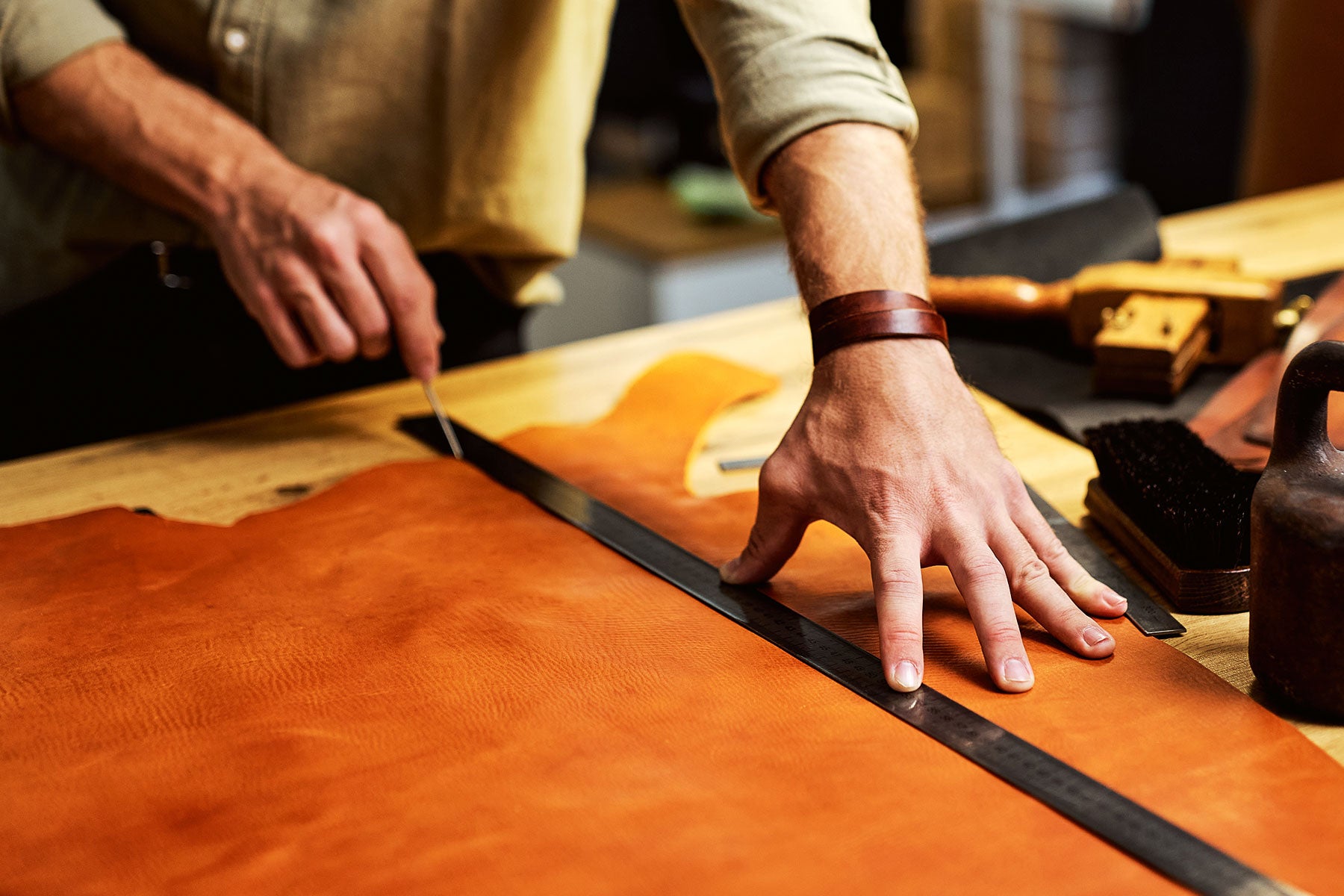
Table of Contents
- What Defines Aniline Leather?
- The Different Grades of Aniline Leather
- How Can You Identify Aniline Leather?
- Key Characteristics of Aniline Leather: Pros and Cons
- Aniline Leather Compared to Other Leather Types
- How to Care for Aniline Leather
- Why is Aniline Leather Considered a Luxury Material?
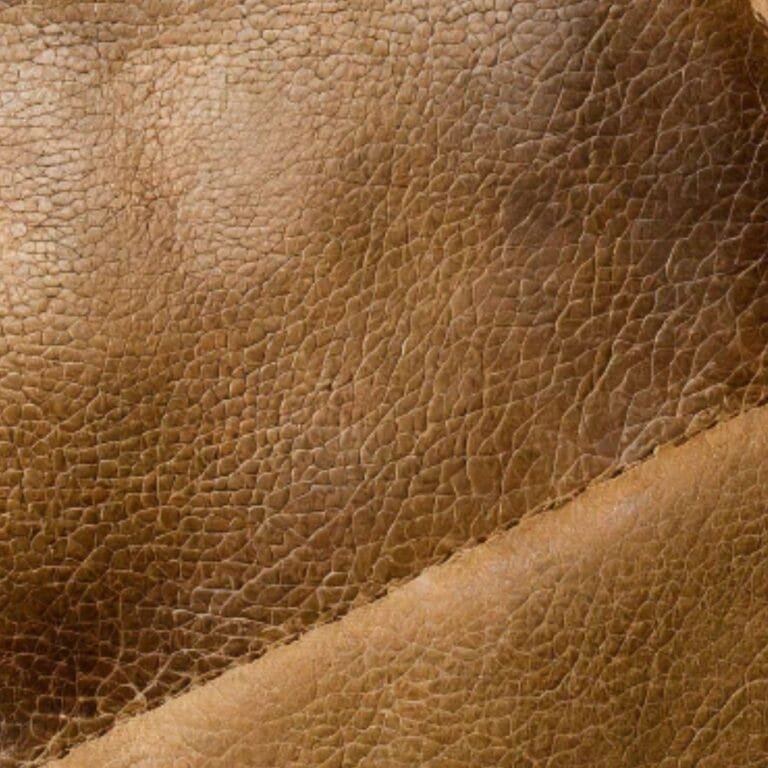
What Defines Aniline Leather?
Aniline leather represents one of the most authentic forms of leather available. Its name comes from the type of dye used in its production—translucent, water-soluble aniline dyes. The process is best understood by comparing it to wood finishing: aniline dyeing is like applying a stain to wood, whereas standard leather production is like painting it. The dye penetrates the hide without coating the surface, allowing the genuine texture, pores, and unique markings of the original skin to remain visible.
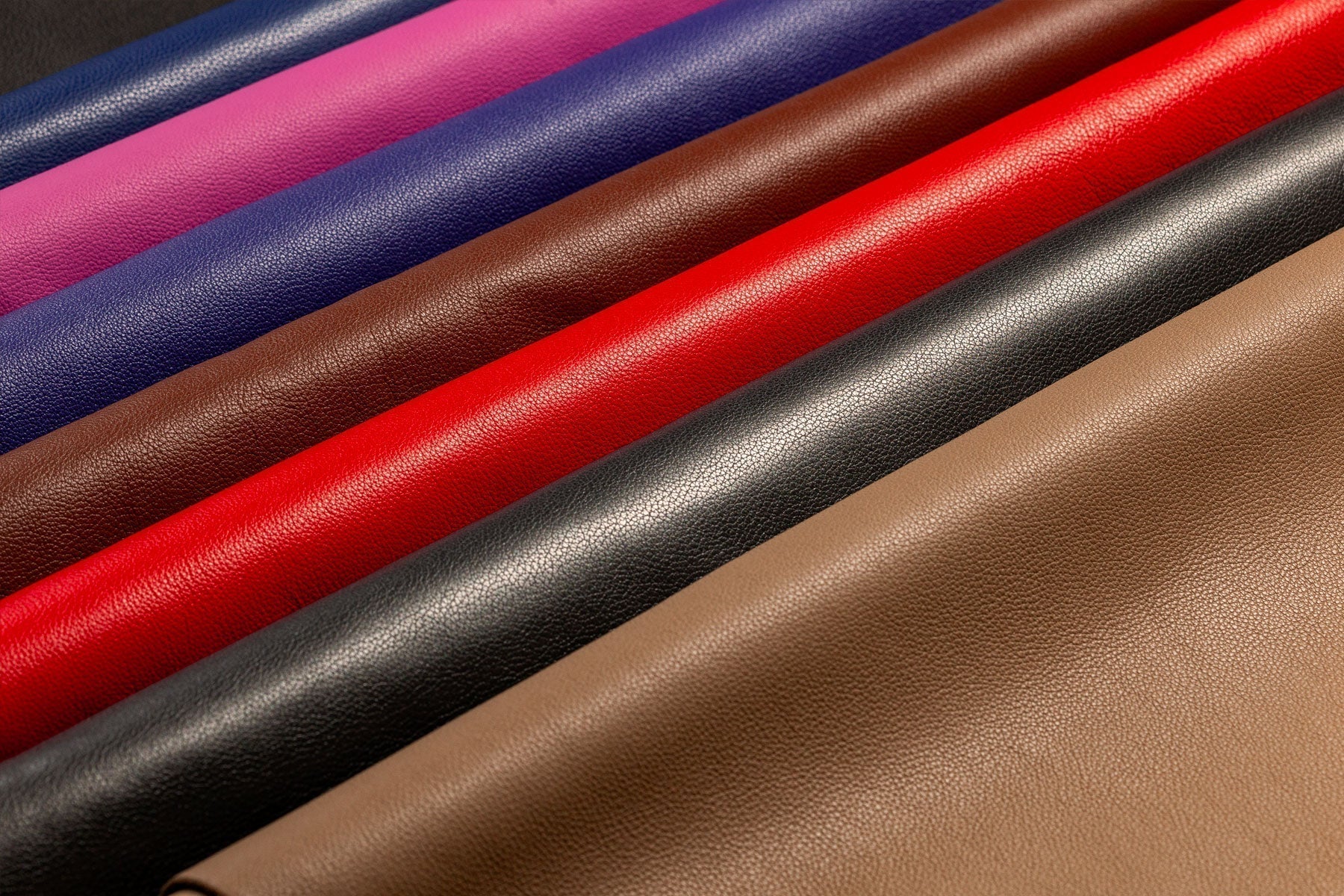
This method requires using only the highest quality hides, typically full-grain, which are the top layer of the hide and the most durable. Because the dyes are transparent, any imperfections such as scars, stretch marks, or insect bites will be apparent. Rather than being flaws, these characteristics are celebrated as proof of the leather’s authenticity and natural origin. This commitment to showcasing the material’s true character is why aniline leather is revered in luxury goods.
The Different Grades of Aniline Leather
While “aniline” refers to the dyeing process, there are distinctions in the finishing that create two primary categories. Understanding these grades helps in selecting leather that matches both aesthetic desires and practical needs.
Full Aniline Leather
Often called pure aniline or unprotected leather, this is the most natural-looking type. After being dyed in a drum, it receives no additional surface coating or pigment. The result is an incredibly soft, supple, and breathable material that feels warm and inviting to the touch. The pores of the hide remain open, allowing it to breathe and develop a rich, beautiful patina over time.
However, this purity comes at a cost. With no protective layer, full aniline leather is highly absorbent and vulnerable to staining, scratching, and fading from sunlight. It is a material for the connoisseur who appreciates its unparalleled beauty and is prepared for the required maintenance.
Semi-Aniline Leather
Semi-aniline leather offers a compromise between the natural beauty of full aniline and the durability of more processed leathers. After the initial dyeing process, a very thin protective topcoat is applied to the surface. This coating contains a small amount of pigment, which helps to even out the color and provide a light layer of protection against spills and wear.
While still showcasing much of the natural grain, semi-aniline is more resistant to stains and fading than its pure counterpart. It provides a more consistent appearance and is easier to maintain, making it a popular choice for items that require a balance of luxury and practicality, such as family furniture and high-use accessories.
How Can You Identify Aniline Leather?
Distinguishing genuine aniline leather from other types requires a keen eye and a sense of touch. If you’re assessing a product, here are a few simple tests you can perform.
- The Visual Test: Look closely at the surface. You should see the fine lines of the natural grain, small pores, and potentially minor imperfections. The color should have depth and variation, not a flat, uniform paint-like finish.
- The Touch Test: Aniline leather feels soft, warm, and buttery. It does not have the cool, slick feel of heavily pigmented or plastic-coated leathers. It should feel natural and fibrous.
- The Light Scratch Test: Gently run your fingernail across an inconspicuous area. On full aniline leather, this will likely leave a lighter-colored mark that you can often buff away with the warmth of your finger. This indicates the absence of a hard, protective topcoat.
- The Water Drop Test: Always test in a hidden spot first. Place a single drop of water on the surface. On full aniline, the water will quickly be absorbed, temporarily darkening the area. On semi-aniline, the drop may bead for a few moments before slowly soaking in. On pigmented leather, the water will bead up and roll off without being absorbed.
Key Characteristics of Aniline Leather: Pros and Cons
Choosing aniline leather involves weighing its luxurious qualities against its practical limitations. The decision often depends on lifestyle, usage, and personal preference for aesthetics versus durability.
The Advantages of Choosing Aniline
The appeal of aniline leather lies in its superior, natural qualities. It is a material that engages the senses. The primary benefit is its unmatched aesthetic; the visible grain and rich, deep color create a look of pure authenticity that cannot be replicated by artificial means. Its luxurious feel is another major draw—the soft, warm texture provides a level of comfort that other leathers cannot match.
Perhaps its most cherished quality is its ability to develop a patina. Over years of use, aniline leather absorbs oils, sunlight, and life’s experiences, creating a unique finish that tells a story. Much like the cherished full-grain leather used in Beldturaleather’s handcrafted bags, aniline leather doesn’t just age; it evolves. Furthermore, its breathability, a result of its unsealed pores, allows it to remain comfortable against the skin in both warm and cool environments.
The Considerations and Drawbacks
The same qualities that make aniline leather beautiful also make it delicate. Its high absorbency means it is extremely susceptible to staining. Spills from liquids like wine, coffee, or even water must be blotted immediately to prevent permanent marks. It is also vulnerable to fading when exposed to direct sunlight for prolonged periods, causing its rich color to lighten over time.
The lack of a protective topcoat means it is prone to scratches and scuffs. While some owners appreciate these marks as part of the leather’s character, others may find them undesirable. Finally, the higher cost reflects the premium selection of hides and the careful processing required, making it a significant investment.
Aniline Leather Compared to Other Leather Types
To fully appreciate aniline leather, it helps to see how it stands against other common leather finishes. Each type serves a different purpose, balancing natural beauty with everyday resilience.
| Feature | Aniline Leather | Semi-Aniline Leather | Pigmented (Protected) Leather |
|---|---|---|---|
| Surface Appearance | Natural grain and markings fully visible | Natural grain mostly visible; slight pigment | Grain is hidden under an opaque pigment layer |
| Feel | Extremely soft, warm, natural | Soft and natural with a slight protective feel | Cool, smooth, and more uniform |
| Durability | Low; scratches and marks easily | Medium; more resistant to wear | High; very resistant to scratches and wear |
| Stain Resistance | Very low; absorbs liquids quickly | Medium; light protective coat repels some spills | Very high; liquids bead on the surface |
| Maintenance | High; requires careful, regular care | Moderate; needs periodic cleaning | Low; easy to wipe clean |
| Cost | Highest | High | Lower |
How to Care for Aniline Leather
Proper maintenance is essential to preserving the beauty and longevity of aniline leather goods. Given its delicate nature, a gentle and consistent approach is best.
- Regular Dusting: Use a soft, dry microfiber cloth to dust the leather weekly. This prevents dirt and grime from settling into the pores.
- Immediate Spill Response: For any liquid spills, blot the area immediately with a clean, dry cloth or paper towel. Start from the outside of the spill and work your way in to prevent spreading. Do not rub, as this can push the stain deeper into the leather.
- Specialized Cleaners: Only use cleaning products specifically formulated for aniline or unprotected leather. Test any cleaner or conditioner on a small, hidden area first to ensure it does not cause discoloration.
- Conditioning: Aniline leather can dry out over time. Apply a high-quality aniline leather conditioner every 6 to 12 months to replenish its natural oils and keep it soft and supple.
- Avoid Harmful Elements: Keep aniline leather away from direct sunlight and heat sources like radiators, as they can cause fading and cracking. Never use household cleaners, solvents, or abrasive materials on the surface. For deep-set stains, consulting a professional leather cleaning service is the safest option.
Why is Aniline Leather Considered a Luxury Material?
Aniline leather’s status as a luxury material is rooted in its absolute authenticity. It is the most direct and honest expression of a natural hide. The selection process is incredibly stringent—only the cleanest, most unblemished hides (often less than 5% of the total) are suitable for the aniline process. This rarity alone commands a premium.
Beyond the material itself, aniline leather embodies a philosophy of celebrating imperfection and appreciating the passage of time. The unique patina it develops ensures that no two pieces will ever be identical, transforming a functional item into a personal artifact. At Beldturaleather, we believe in celebrating the inherent character of the hide, which is why our artisans work with premium full-grain leather that honors these same principles of authenticity and quality. Owning an aniline leather product is an investment in unparalleled craftsmanship and a timeless, natural beauty that simply cannot be manufactured.

